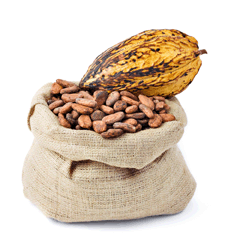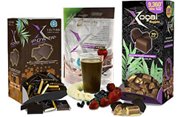|
Good Chocolate vs Bad ChocolateOver the centuries, chocolate has come full circle. From Good to Bad, and again from Bad to Good. Most of the modern world currently views chocolate as a tasty but quite unhealthy indulgence meant for only occasional consumption. But health-conscious consumers are now learning that dark chocolate, devoid of some of the unhealthful ingredients usually paired with it in confectionary products, possesses some impressive health properties. Scientists are rediscovering what ancient Mesoamericans knew centuries ago: chocolate can be very good for you. It may have been cultivated for over two thousand years, but in the last five years science has finally begun to discover the actual health benefits of cocoa. Research is just beginning and is especially promising in the area of phytonutrients, polyphenols, and flavonoids. However, not all chocolate is created equal. Most candy bars and chocolate foods commonly found in grocery stores are not what you’re looking for. These are typically high in refined (white) sugar, milk fats, and hydrogenated oils—ingredients that replace the truly healthful nutrients found in cocoa. It’s important to remember that what makes chocolate healthy is the chocolate itself—that is, the pure cocoa that comes from the bean of the cacao plant. Studies confirm that the chocolate products with the highest levels of polyphenols and procyanidins should contain at least 70 percent pure cocoa powder. What this means is that, while it’s not necessarily bad to have “milk” chocolate, which contains a higher percentage of cream or milk, the more pure cocoa the chocolate contains, the more beneficial it will be. Bitter is better.
Also, many chocolate confections are processed using a procedure known as “Dutching,” which neutralizes the chocolate’s acidic flavor and modifies its color by adding alkali-potash to the cocoa nibs before roasting. However, this alkalinization process also removes most of the chocolate’s natural polyphenols. Another process commonly used by confectioners that can damage cocoa’s healthy nutrients is roasting: when chocolate is prepared above 100 degrees Fahrenheit, its antioxidant compounds are destroyed. So when looking for a healthy chocolate product, look for a dark chocolate product with the following properties: • Has not been alkalized • Has been dried and cool-pressed rather than roasted • Consists of at least 70 percent pure cocoa • Contains cocoa butter instead of milk fats or hydrogenated oils • Contains natural, low-glycemic sweeteners—such as raw cane—rather than refined sugar Return from Good Chocolate vs Bad Chocolate to Healthy Chocolate |







